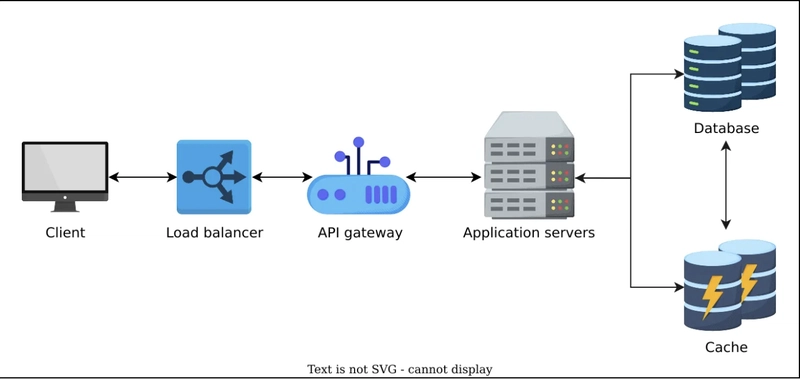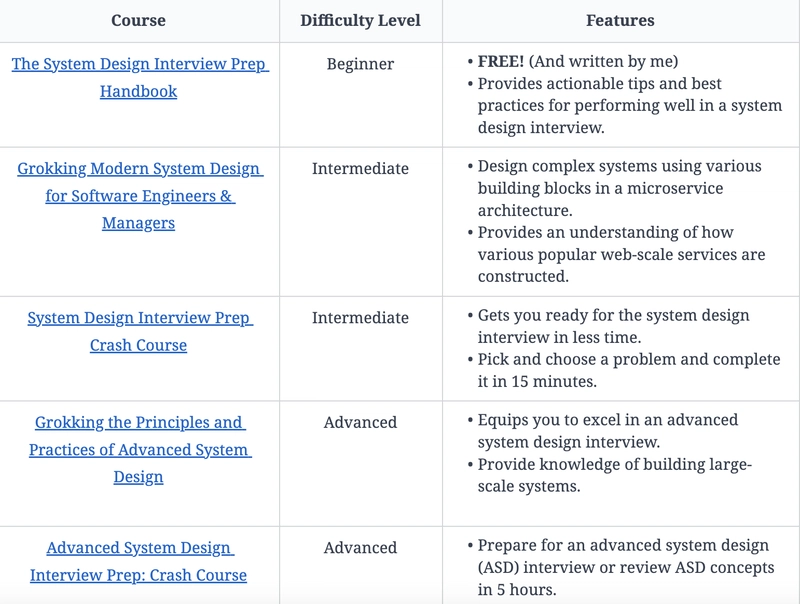When I was a Computer Science student, I dreamt about working at a FAANG company.
With their strong global influence, I would’ve been thrilled to be welcomed into either of the five tech giants of FAANG (or MAANG): Facebook/Meta, Amazon, Apple, Netflix, or Google. After years of diligence, I eventually landed my first such role at Microsoft, and later, I also found a job opportunity at Meta (then, Facebook).
There’s no doubt that working at FAANG/MAANG companies is a thrill. You get to work on cutting-edge products and technologies that shape the industry’s present and future. No matter the challenge at hand, your work will always make an impact. To help them achieve their goals, these companies hire the best. Once you get their attention, you’ll go through a rigorous interview process which may include the system design interview.
As a former candidate and interviewer in several FAANG/MAANG System Design Interviews (SDIs), I’ll share insider tips to help you prepare for success in this quintessential tech interview round.
Why we do system design interviews
In today’s world, nearly every technology is (or relies on) a distributed system. As a result, it’s increasingly expected that developers understand how to contribute to maintaining large-scale systems (and junior developers are no exception).
SDIs not only help assess your ability to handle complex architectural challenges and make informed design decisions, but they’re also a stepping stone if you’re aspiring to advance into more senior or leadership roles. For those looking to lead teams or design systems, the SDI often asks the same interview questions, but the candidates’ responses are expected to be far more nuanced and in-depth (but we won’t be getting into that today).
What’s different about system design interviews?
During SDIs, candidates are typically presented with an open-ended problem or scenario, such as “How do you design a messaging app like WhatsApp?” The interviewer evaluates the candidate’s ability to understand the problem’s requirements and constraints, identify key components and interactions, make design decisions, and justify their choices.
SDIs are different and seem more challenging than coding interviews for two reasons.
Firstly, with their focus on designing large-scale systems, the subject matter of SDIs may be entirely new to you. Approaching SDI problems requires an in-depth understanding of large-scale distributed systems, system architecture, computer networking, data modeling, component interaction, and other relevant concepts. It may seem like a lot to learn, but it’s certainly doable.
Second, SDI solutions are subjective. Whereas a coding interview problem has one straightforward answer, there can be various solutions to this single system design problem. As a result, your process is especially important to interviewers. These interviews rely heavily on communicating your thoughts throughout your design process, as well as displaying the right soft skills (which I’ll share below).
When does the SDI occur in the FAANG/MAANG hiring process?
Generally, the hiring process at FAANG/MAANG companies involves several interviews. The system design interview typically taking place after the initial coding rounds, but before specialized coding and behavioral interviews.
Here are the general steps of the hiring process of these top tech companies:
Phone screen interview: This is an initial interview conducted over the phone (or a Zoom call) to assess your basic qualifications and fit for the role.
Basic coding rounds: This interview can have multiple rounds and evaluate candidates’ algorithmic problem-solving skills and coding proficiency.
System design interview: This interview assesses your ability to design scalable and efficient systems.
Specialized technical interviews: These interviews focus on specific technical areas or domains relevant to the role. They can last several rounds and are considered optional in some companies.
Behavioral interviews: These interviews evaluate your soft skills, communication, and cultural fit.
An on-site interview (optional): This is an optional interview round conducted at the company’s location, typically comprising technical and behavioral assessments.
The interview
Let’s examine the typical structure of these interviews and gain insights into effective strategies and pitfalls to avoid.
Structure of system design interviews
Here’s what you can generally expect in the system design interview.
Initially, the interviewers present you with an open-ended question, like, “How would you design a rideshare app?” You would then be expected to ask questions to understand and scope the problem’s requirements and set constraints. From here, you would then draw a high-level design outlining major components, their interaction, and the system’s flow.
After the high-level design, you’d provide a storage schema for data and define API models. You can then get into the specifics of the design, discussing each component and covering deficiencies of the high-level design. This involves discussing data structures, algorithms, communication protocols, and sometimes the implementation details.
System design interviews are discussion-based, you be expected to spend time answering follow-up questions, evaluating and discussing aspects of your design, and highlighting distinctive design features to convey the depth of your understanding.
Soft skills: acting and reacting during the interview
In the interview, we’re looking for various soft skills that make you a strong fit for the team. These include:
Effective communication: Effective communication is crucial in a system design interview. This includes scoping the problem by asking refining questions and explaining your approach and design choices to solve it. You should also seek feedback on your solution from the interviewer and discuss tradeoffs.
Showing your vantage point: System design interviews are designed to evaluate your understanding and seniority level. By showcasing your in-depth knowledge and expertise in distributed systems and system architecture, you provide evidence of your qualifications and readiness for the role.
**Time management: **System design interviews typically have a limited duration, ranging from 45 minutes to an hour or more. Effective time management is crucial to dedicate time to each step of the solution, such as requirements identification, high-level design, API design, and detailed design.
**Follow a framework: **Solving systems design problems is challenging and often lacks a one-size-fits-all solution. However, following a well-defined and systematic approach during the interview helps you cover all aspects of a design problem. For instance, the RESHADED framework provides guidance to cover key aspects of a design problem. This framework doesn’t prohibit the application of other strategies. Feel free to use your own (or other) problem-solving approach that you believe will guide you to cover major aspects of a final solution.
Pitfalls to avoid in a system design interview
Here are a few beginner pitfalls to avoid in a system design interview:
- Avoid writing code during the interview.
- Don’t begin building without a clear plan.
- Avoid working silently; communicate your thought process.
- Provide explanations for any numerical figures mentioned.
- If unsure about something, be honest rather than attempting to cover it up or pretending to know.
- Avoid getting overly focused on minor details.
After the interview
After the interview, following up appropriately to express gratitude for the opportunity and reiterate your interest in the position is important. For this purpose, send a thank you email highlighting your interests and asking for the next steps. Similarly, following up politely and professionally is acceptable if you haven’t heard back within a time frame (probably a couple of weeks). However, avoid being overly persistent and impatient, as the hiring process may take time.
Preparation resources
At Educative, we offer a range of resources to prepare for system design interviews. These include courses, technical blogs, newsletters, and Educative Answers. One of our latest additions is our AI mock interviews, which help you get realistic interview practice on-demand, at an affordable cost.
- Courses: The Educative repository consists of several comprehensive, well-written, and AI-powered courses related to the system design domain. A list of these courses, their difficulty level, and what features these courses offer is presented in the following table:
Technical blogs: The following blogs provide insights into system design interviews and discuss frequently asked system design problems:
Top 14 System Design interview questions for software engineers
API Design Interview vs. System Design Interview: 5 minute guide
Mock interviews: Our domain experts have also created an AI mock interviewer to help you prepare well for system design interviews. The interviewer asks questions about a chosen system design problem, assesses your performance, and provides detailed feedback on your improvement points. The interviewer can also test your API design, coding, and OOD skills.
Other preparation resources: Besides courses and technical blogs, we have resources such as Educative Answers and technical newsletters dispatched weekly to your email address. You can also visit the engineering blogs of the FAANG/MAANG companies to get a detailed insight into their systems. Such blogs showcase their technical expertise, attract talent, and share knowledge and best practices within the industry.
Preparing for success
FAANG/MAANG companies have high standards for their candidates, but that doesn’t make it impossible to succeed in them. With the insights I shared with you, and diligent interview prep, you should be ready to perform well in the interview.
As a reminder, we have various courses at Educative to help you expand your knowledge of system design concepts and prepare for a challenging interview. You can check them out below.
Good luck interviewing!







Top comments (0)